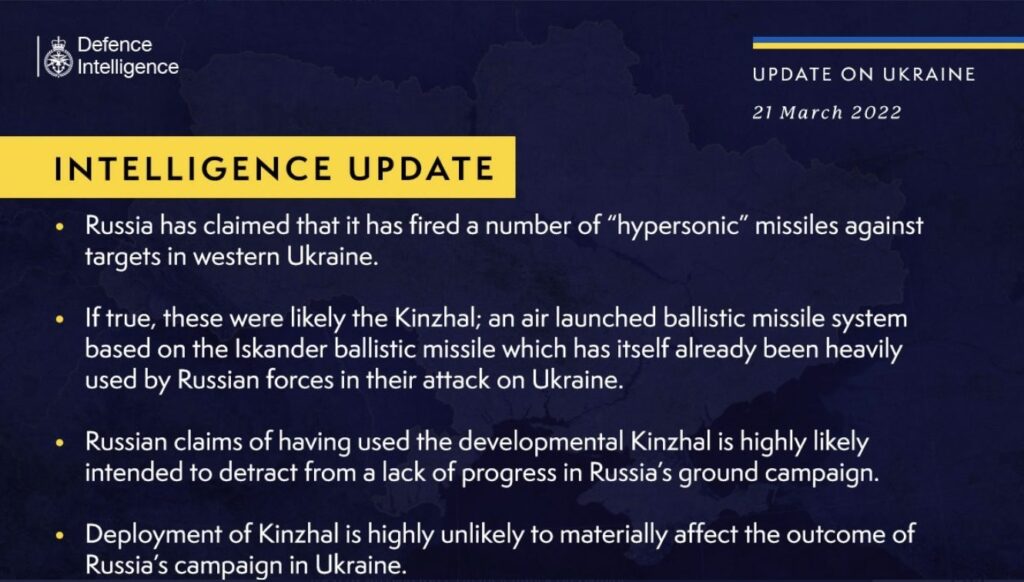This first edition of my Global Risk and Intelligence newsletter will detail my top three global risk and intelligence forecast for 2023. Caveat: Contrary to popular thinking, intelligence (and geopolitical analysis) cannot predict the future, but instead provides an assessment of likely scenarios or developments. My top forecasts for 2023 (detailed below the bonus summary of additional risks to watch):
- Desperate Putin Unleashes Surprising Hell
- Assassination Attempt on a National-Level U.S. Politician
- More Climate Change-Induced, Record-Breaking Natural Disasters
Bonus: Additional global risks to watch in 2023:
- The Nagorno-Karabakh Conflict. Several weeks after I warned about the risk of renewed conflict over Nagorno-Karabakh in a post here on LinkedIn, the second war between Armenia and Azerbaijan broke out in late September 2020 (the first war was 1991 to 1994). This 2020 conflict was the most intense fighting since 2016. Tensions between the two South Caucasus nations have risen again in early 2023 as they trade allegations, risking the ceasefire Russia brokered in November 2020. Another conflict between them could put at risk Azerbaijan’s gas exports, a key piece of EU states’ efforts to partially wean themselves off Russian gas.
- Gen. Qasem Soleimani Avenged? Do not think Iran will give up an opportunity to avenge the Trump administration’s January 2020 killing of Gen. Qasem Soleimani, the very powerful and much revered commander of Iran’s Islamic Revolutionary Guard Corps (IRGC) Quds Force. Iran’s retaliation will come at the time and place of its choosing. After the 2008 assassination of Imad Mughniyeh, a very senior leader in Lebanese Hizballah, it took four years for Iran and its proxies to avenge his death (via a suicide bombing that killed five Israeli tourists and a driver)–and that suicide bombing might not even be the fait accompli. If necessary, Iran will play the long game in avenging Soleimani, almost certainly of concern to the U.S. Department of State Diplomatic Security Service protecting former Secretary of State Mike Pompeo and his aide Brian Hook. Last year the U.S. Department of Justice reportedly told Pompeo he was the target of an IRGC plot to murder him and Trump’s former national security advisor John Bolton.
- Increased Chinese Intelligence Preparation of the Battlespace (IPB). Expect increasingly aggressive–and frequently successful–Chinese intelligence operations against Taiwan and the U.S. in 2023 and beyond to support its Taiwan war planning. “IPB” is basically U.S. military parlance for “do a lot of intelligence stuff to directly support conflict”. The director of the Federal Bureau of Investigation (FBI) and various U.S. counterintelligence officials have publicly stated that China poses the biggest counterintelligence threat to the U.S. And China needs to prepare for whatever it plans to do about Taiwan–whether it is an invasion or a naval blockade of the island (I think the latter is more likely, at least initially).
- Kim Jong Un’s Health. Many people do not appreciate the extent of KJU’s health risk factors. Despite his weight loss in 2021, Kim is still obese and his death could result from his lifestyle (excessive smoking, drinking, and presumably stress) and genetics–his half-brother, father, mother, paternal grandfather, and aunt had a slew of ailments and chronic illnesses; his father and grandfather died from heart attacks, and his murdered half-brother also had heart problems, as does his aunt. The dictator’s health arguably poses as much, if not more, of a threat to him than a coup by disenfranchised, malnourished masses or vengeful elites. And his demise, regardless of cause, could have repercussions beyond North Korea.
Now for my main forecasts for 2023:
Desperate Putin Unleashes Surprising Hell
In 2023 a desperate President Vladimir Putin might use a new conventional weapon and or unprecedented (even for him) tactics in Ukraine that could surprise or shock the world. Possible conventional weapons include Russia’s much-hyped Tsirkon (Zircon) hypersonic missile and the nuclear-powered SSC-X-9 Skyfall cruise missile. Ironically, neither weapon is likely to provide much, if any, additional advantage to Russian military operations in Ukraine.
Hypersonic missiles fly five times the speed of sound (Mach 5, or one mile per second) and spend most of their flight inside the Earth’s atmosphere, where they can use aerodynamics to maneuver (unlike ballistic missiles that enter space). In theory, hypersonic missiles combine the speed advantage of ballistic missiles with the accuracy of cruise missiles. However, significant technological challenges abound for any country developing hypersonic missiles. In 2019, Putin stated the Zircon could achieve Mach 9 and has a range of 1,000 km (621 miles)–questionable claims. And just last month, the Russians announced the deployment of the frigate Admiral Gorshkov equipped with the Zircon. Thus, it presumably is the world’s first hypersonic missile to be operationally fielded, and after only 11 years of research and development. The Russians labeling the aircraft-fired Kinzhal ballistic missile, which they used for the first time against Ukraine a year ago, as “hypersonic” is mostly a propaganda and marketing ploy; nearly all ballistic missiles reach hypersonic speeds. The Russians reportedly plan to test the Zircon this month in the trilateral “Mosi II” exercise with South Africa and China. It is uncertain whether hypersonic missiles would provide Russia any appreciable advantage, beyond the tactical level, over its other missiles in the Ukraine war.

- Revealed by Putin in March 2018, the Burevestnik cruise missile (NATO codename: SSC-X-9 Skyfall; U.S. Intelligence Community reported codename: KY30) is nuclear powered in order to provide it “unlimited range“. The Skyfall is reminiscent of the U.S. military’s ill-advised Supersonic Low-Altitude Missile (SLAM) in the 1960s. Codenamed Project Pluto, its R&D was scrapped in 1964 over concerns about pesky radiation leaks during testing, and also the weapon deafening and irradiating allies along its operational flight path. How prescient. A fatal, radiation-spewing accident in September 2018 was likely caused by a Skyfall-related test. Putin’s employment of the Skyfall against Ukraine would not technically qualify as a nuclear attack but the political and environmental ramifications would be significant. And like the Zircon hypersonic missile, the Skyfall would likely provide little to no military advantage to Russian forces.
Putin has gotten himself into an unforced mess–a quagmire–in Ukraine for no reason other than his ego, hubris, Soviet-era nostalgia, post-Cold War great power envy, and what I call the autocrat-sycophant feedback loop. Autocrats–and even democratic leaders with autocratic tendencies–not only think they know better than the experts, but they also surround themselves with an increasingly small group of sycophants who tell them what they want to hear (often out of fear). Autocrats’ decisions are then based on this bad information, after which they blame their sycophants and others when things do not progress as expected. Putin’s “special operation” in Ukraine that was supposed to last a few days and lead to Ukrainians assisting in the overthrow of their government has showcased Russian war criminality and failures of the Russian military at the tactical, operational, theater-strategic, and strategic levels.
The autocrat’s fix or revenge for this bloody stalemate and the West’s seemingly endless supply of weapons to Ukraine will likely not be a nuclear strike on Ukraine. Whatever form it takes he might lash out in frustration and desperation for the mess he blames on his national security sycophants, his musical chair military commanders, and interference by the West. His military’s mess at all levels of war result from a toxic stew of the autocrat-sycophant feedback loop, group think, TV sitcom-type bad leadership by his military commanders, endemic corruption, insufficient training, operational security failures, excessive secrecy, and flawed kit produced by the manufacturing infrastructure. But this does not mean that Russia cannot produce formidable, innovative weapons.
Yes, Russia’s defense industrial base also suffers from endemic corruption. And Putin’s “finish this work in a month” rebuke on live television of his trade and industry minister, who oversees Russia’s defense industry and the supply of equipment to service members, broadcast the autocrat-sycophant feedback loop’s effect on the defense industrial base.
Yet Russia likely maintained the capacity and capability to research and develop advanced weaponry (with parts from US, European and East Asian companies, including Analog Devices, AMD, Cypress Semiconductor Corporation, Intel Corporation, Maxim Integrated, Texas Instruments, and Xilinx). And like many countries with advanced militaries, Russia might reveal and use its most sensitive, advanced weapons only when it is deemed absolutely necessary. The same for tactics even more inhumane and illegal than what its military has already unleashed on Ukraine. Watch out for when Putin has had enough humiliation in Ukraine, especially if the 70-year-old begins to fear his mortality and grow more concerned about his legacy. And avoid a debilitating, myopic focus on his nuclear threats.
Assassination Attempt on a National-Level U.S. Politician
I assess that this year in the U.S. there will be an assassination attempt against a national-level, elected U.S. politician. As many analysts and pundits have observed, America’s current level of partisanship and divisiveness is unprecedented in recent history (the years leading up to the U.S. Civil War, the Civil War itself, and the election of 1876 are solid competitors). The number of kidnapping and assassination plots and communicated threats against elected officials have increased dramatically over the past several years. Between 2016 and 2021 the number of recorded threats against members of Congress increased more than tenfold, from 902 threats to 9,625 in 2021, according to the U.S. Capitol Police (fortunately the vast majority of communicated threats are never carried out). The trend in actual attack planning, security breaches, threatening confrontations, and attacks against public figures–not all of which are politically motivated–is even more alarming.
- On February 8, 2023, Milford, New Jersey Republican Councilman Russell Heller was shot and killed in the parking lot of PSEG‘s Central Division headquarters. Heller was a senior distribution supervisor at PSE&G for 11 years. A former employee approached him in the parking lot, shooting him outside of his vehicle, according to the Somerset County Prosecutor’s Office.
- On Wednesday Feb 1, 2023, Sayreville, New Jersey Republican Councilwoman Eunice Dwumfour was shot and killed in her car (the dearth of media coverage for what appears to be a targeted killing of a politician is also unfortunate).
- In late October 2022 a man broke into the house of then House of Representatives Speaker Nancy Pelosi (D-Calif.) and attacked her husband. The suspect said he had planned to kidnap Pelosi, who at the time was second in line to the presidency, and also accused Democrats of interfering with Donald Trump’s campaign. He reportedly also had President Joe Biden’s son Hunter Biden and California Governor Gavin Newsom on his hit list.
- In July 2022, a man repeatedly showed up at the house of U.S. Representative Pramila Jayapal (D-Wash.), armed with a semiautomatic handgun and shouting threats and profanities including “Go back to India, I’m going to kill you.”
- Also in July 2022, a man walked on stage and appeared to attack Republican gubernatorial candidate Lee Zeldin (R-NY) on stage at a campaign event.
- In February 2022 a gunman fired shots at Democratic mayoral candidate Craig Greenberg in Louisville, Kentucky after entering the candidate’s campaign headquarters.
- The January 6th insurrection in 2021 was the first breaching of the U.S. Capitol since 1812 (at the hands of the British army) and the first time ever by Americans (although America’s only female terrorist group, the May 19th Communist Organization, detonated a bomb in the Capitol in 1983). Many insurrectionists during the breach called for the assassination of Vice President Mike Pence, who was in the Capitol; members of Pence’s U.S. Secret Service detail feared for their lives; and Rep. Ayanna Pressley (D-Mass.) has claimed panic buttons in her office, which had been regularly tested, were removed without explanation some time before January 6.
- In October 2020 law enforcement officials arrested 13 militia violent extremists (MVEs) from three states for conspiracy to kidnap and execute Democratic Governor of Michigan Gretchen Whitmer before the November 2020 elections. The MVEs also conspired to assault the Michigan State Capitol and initially considered kidnapping Democratic Virginia Governor Ralph Northam.
- In July 2020 in New Jersey, a well-known men’s rights lawyer killed U.S. District Judge Esther Salas’ son and shot her husband in an apparent assassination attempt on the judge.
I assess that any assassination attempt(s) against a national-level politician will likely occur in or around the protectee’s vehicle, where he/she is most vulnerable. The majority of assassination attempts against VIPs occur in and around their vehicle, and the majority of these attempts are successful. As previously mentioned, New Jersey Councilman Heller and Councilwoman Dwumfour were shot and killed in or near their cars.
The area between a building’s facade and the protectee’s vehicle–the distance the VIP must traverse on foot–is particularly vulnerable. John Hinckley’s assassination attempt against President Ronald Reagan in 1981 occurred as Reagan headed towards his limousine after exiting the Washington Hilton. And in 1975 Sara Jane Moore attempted to kill President Gerald Ford after he departed San Francisco’s St. Francis Hotel while walking to his limousine.
By my count, globally at least 20 politicians, judges, government ministers, senior military officers, police chiefs, nuclear scientists, and an ambassador have been victims of assassination attempts and assassinations between 2020 and 2022 while they were in or near their vehicles.
More Climate Change-Induced, Record-Breaking Natural Disasters
Climate change is causing increasingly frequent and severe storms, resulting in unprecedented financial losses. In 2023, expect to see more of the same and also possibly more cascading and compounding natural disasters–when simultaneous or subsequent natural hazards and their impacts occur. And the effects of climate change could adversely complicate rescue and recovery efforts after future natural (or man-made) disasters.
According to reinsurance company Swiss Re, natural disasters caused at least $268 billion USD of damage around the world in 2022, but people, companies, and organizations were insured for less than half of that loss–an estimated $115 billion USD. These insured losses in 2022 are well above the 10-year average of $81 billion USD). And the average global loss by natural disasters over the previous 10 years was $219 million, so there has been upward trend.
Hurricane Ian, a category 4 hurricane that made landfall in western Florida in September, was 2022’s costliest natural catastrophe with estimated insured losses of $50–65 billion USD. Ian highlights the monetary and human damage that one natural disaster can wreak. In February and March 2022, torrential rains led to widespread flooding in Australia, the country’s costliest-ever natural catastrophe. Extreme flooding in California late last year and January showcase the importance organizational and individual awareness of known natural hazards. Blissful ignorance has resulted in only 2% of California homeowners having flood insurance.
In 2023, Asia-Pacific will remain the world’s most disaster-prone region, as it was when a little over 10 years ago, I served in the U.S. military’s only manned “standing joint force headquarters”–a team of crisis planning experts who trained U.S., allied, and partner nations in the region. We were ready to immediately deploy in response to disasters and other crises. We were based in the Pacific. In this region, disaster displacements between 2010 and 2021 comprised 78% of the global total, according to Asian Development Bank (ADB). In 2023 and beyond, watch for weather-related hazards in the Pacific (especially East Asia and Southeast Asia), which were responsible for 95% of all disaster displacements across the region between 2010 and 2021.
At some point in the future shareholders might seek to hold executives accountable for not taking sufficient precautions such as risk transfer (e.g., sufficient insurance policies) and adequate business continuity planning for foreseeable natural disasters that disrupt company operations. And as Swiss Re notes, the insurance industry will need to model evolving frequency and severity trends. Regardless, elected officials, emergency managers, business continuity professionals, risk managers, security managers, and other professionals would be ill-served in 2023 by not planning for the upward trend in natural hazard severity and losses.


